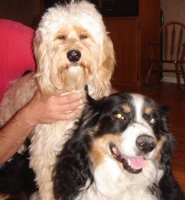
God has given me a life filled with purpose. I enjoy my life. First and foremost I love my role as the wife of a wonderful man and the mom of two terrific children. I love my family greatly and seek to make our home a place where we all love to live.
A second role I love is with the Deaf Ministry at our church. Since captioning is the focus of this blog, let me focus on that subject and tell you how I got started in ministry with the Deaf.
My Introduction to Signing:
Back in 1988 I was studying to become a missionary at Point Loma University in beautiful San Diego. The student that lived across the hall from me met a deaf student on campus and made it her goal to learn to communicate with him. She didn’t want to be his only friend so she sought out to teach as many of her friends as possible. She faithfully came home every night with new signs and taught them to us. She would then quiz us on the words she had already taught. I learned, but lacked motivation. Motivation ultimately came in the form of friendship…maybe even a little crush on the deaf student. It’s amazing how much quicker one learns when one wants to learn!
I learned quite a bit of sign language during those college years, but after graduation my deaf friend and all of those who signed moved. I didn’t sign for about 6 years.
Learning to Become an Interpreter:
During those 6 years, I met my husband and married. In search for a good career and a flexible schedule, I then decided to take some American Sign Language (ASL) classes. I thought that interpreting might be the perfect match for a full time mom and wife. I completed all but one class in the interpreter program at our community college and passed the interpreting evaluation to interpret for college level classes. However, I chose not to start down that road since I didn’t feel ready to be an interpreter.
Working in a Deaf Environment:
Instead, I applied for a job at DawnSignPress (DSP), a Deaf owned publishing company in Mira Mesa. About half of the employees are Deaf and half are hearing. Almost all of the employees know sign language. In this environment, I met many Deaf friends and learned much more about the Deaf Culture and ASL. I worked at DSP until I adopted our firstborn baby in February of 1997.
My First Try at Interpreting:
Let me back up a little…While I was an interpreting student, a man at my church approached me. His name was Lance. He asked if I would be willing to sign for him at church. I said, “I can’t. I’m still a student and I don’t know enough sign language to interpret.” He responded, “Anything you can do will help me. I want to go to this church with my family. Anything will be better than trying to lipread.” He also suggested I ask one of the other students from my interpreting class to team with me. I agreed to give it a try.
Learning to sign in pictures:
This experience signing at my church taught me SO MUCH!!
I didn’t understand why, at that time, but Lance did not understand any fingerspelling. As a result, I could not ask him what the sign for a word was. For example: The pastor would say something like “Jesus was without sin.” Since I didn’t know what the sign for sin was (because they don’t teach that kind of vocabulary at the Community College) I would replace the word "sin" with words I knew, like “Jesus always obeyed God, 100%” or “Jesus never did wrong/bad.” It was a constant challenge and caused me to think deeply about the meaning of words, especially religious words. This also helped me to get away from signing in English word order.
I signed for Lance at church for 2-3 years, and then one day he came into church limping. Since he was only about 35 and his body looked strong (He obviously lifted weights and exercised regularly), I was puzzled. I asked him what happened. He said his leg just started hurting and that he had an appointment with a doctor scheduled. The next week when he came into church he told me he had late stage colon cancer and would die very soon. He died two weeks later. I was shocked. I didn’t know Lance well, but I’m thankful that God brought him into my life. Before I knew Lance I could only express thoughts and sentences in signed sentences that were like English. Lance caused me to see and express concepts and sentences in sign language pictures.
God Brings a Deaf Friend Into My Life:
While I was working at DSP I met a deaf woman who has brought me the next stretch in learning ASL. Her name is Maryann. Over the last eight years she has become a very dear friend.
Who is Teaching Who?
Maryann found out that I am a Christian when another deaf woman came up and warned her that I'm a Christian. Yes, warned her. I’m not sure why she did that, but it made Maryann very curious to know me more. I’m glad it happened. To make a long story short, Maryann began asking me questions about church and God. I loaned her my copy of the video, The Life of Christ – it’s an ASL Bible translation of Jesus’ life. She watched it and had many questions so we set up a weekly time to get together to talk.
Every week we both learned. She learned the Bible and I learned ASL. She felt frustrated that she didn’t understand the Bible and I felt frustrated that I couldn’t sign good enough to explain. Neither of us gave up even though it was a great challenge. The result? Maryann accepted Jesus and began to trust Him to guide her life and my ASL improved dramatically. We’re still both learning and we make a great team.
I started interpreting at church when Maryann became interested in attending. This was only a few months after Lance died. I still sign at church weekly. Somewhere along the line I changed from a signer to an interpreter. How do I know? When I first started signing at church deaf people would visit and never return. I’m sure that they didn’t understand what I was signing. As the years passed other deaf people would visit. When they started staying I figured the message was now clear enough for them to understand.
God Answers Prayer:
Here’s another story worth sharing – When Maryann first became a Christian most of her friends decided to end their friendship with her. They didn’t want anything to do with a Christian. She was now very isolated since her new church didn’t have any deaf people or hearing people that signed. We tried having her teach an ASL class at the church so more hearing people could communicate with her, but ultimately she needed some deaf Christian friends. One night, our pastor asked us to write down a prayer request. This is what Maryann asked for, “more deaf people at our church.” In the next 3 months, we had 25 deaf people visit our church. We still don’t know how God did it, but deaf people started coming. Several stayed and have become good friends. God also brought interpreters to team interpret with me. God is so good!
 it will be impossible to train the computer to recognize every voice used on stage. To remedy this, we will use a "shadow speaker." This person will train the software to recognize his/her voice and then will repeat what is being said from the variety of speakers on stage.
it will be impossible to train the computer to recognize every voice used on stage. To remedy this, we will use a "shadow speaker." This person will train the software to recognize his/her voice and then will repeat what is being said from the variety of speakers on stage.
